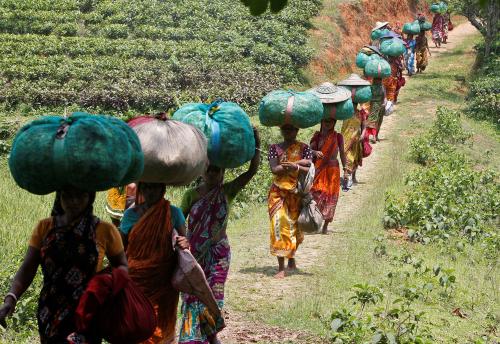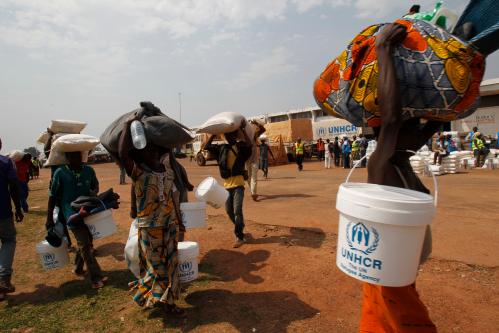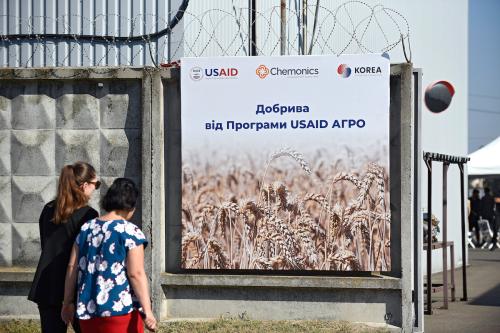This week, 15 development experts and economists published an open letter in which they push back against the dominance in foreign aid of micro-level projects and short-term thinking over macro-level planning that tackles the root causes of underdevelopment. They make excellent points in this regard.
The article suggests that there is a trade-off between micro-level and macro-level policies and between addressing short-term and long-term problems—forcing an “either/or” dichotomy that ignores potential synergies between short-term and long-term development strategies.
Micro-level supremacy
The authors decry a narrow aid agenda focused on “micro-interventions,” an approach which “tends to ignore the broader macroeconomic, political, and institutional drivers of impoverishment and underdevelopment.” The authors single out the growing use of randomized controlled trials (RCTs) and argue that aid agencies suffer from “obsessive measurement disorder,” as others have also done.
Their argument is persuasive. Assessing projects individually cannot determine whether the overall mix is the most effective for a country. Impact studies often ignore opportunity costs of scarce resources; a project may be effective at its stated goal without representing the best use of funds for a country’s overall development. The benefits and drawbacks of RCTs are fiercely debated, and over-reliance on this methodology ignores stated concerns.
The pendulum swings
After calling out the development community for too little focus on macro-level approaches, the pendulum swings too far in the other direction: “Aid projects might yield satisfying micro-results, but they generally do little to change the systems that produce the problems in the first place. What we need instead is to tackle the real root causes of poverty, inequality, and climate change.”
It would be more effective to also tackle the root causes, but arguing that policymakers should tackle them instead of short-term goals is misguided. It is equally plausible that the causal arrow runs in the opposite direction—that the obsession with short-term problems results from lack of political will to attempt long-term solutions. Aid focused on the short-term cannot crowd out long-term solutions if the options are short-term or nothing. Knowing the counterfactual matters: If you rip a bandage off a wound that needs surgery and the surgery doesn’t happen, the wound gets worse rather than better.
Time horizons are one reason politicians focus on problems where quick, measurable progress is possible. Incumbent officials in the U.S. receive more votes after providing disaster relief funding, but not for long-term disaster preparedness spending. When demonstrating quick results is the government’s goal, resources removed from short-term development projects are likely to be used for non-development short-term goals rather than for long-term development.
The authors argue that addressing underdevelopment requires policymakers to tackle the ecological emergency of climate change, end agricultural subsidies in rich countries, regulate tax havens, and coordinate internationally on labor standards, among others. These are complex and politically charged issues. While donors may increase aid for short-term projects to appear as if they are “doing something,” it is unlikely that short-term aid projects are the main impediment to tackling climate change or agricultural subsidies. These are politically difficult issues; they will remain difficult even if aid for schools and clinics is cut and RCTs discontinued.
Examples raised in the article depict situations where it is easier to address short-term symptoms than root causes, but political feasibility does not always favor the short-term response. Refugees are a result of systemic problems, but donors would rather provide aid in an attempt to address root causes than deal with the immediate influx of people in a humane way.
Complements, not substitutes
Arguments about the relative importance of micro and macro programs in development are not new, but the “either/or” approach misses opportunities to discusses synergies between short-term and long-term goals. Long-term development requires countries to confront systemic and difficult problems; it also needs people who are educated, fed, free of preventable diseases, and still alive.
While working toward changes in long-term policies or operating in countries where systemic change is not currently feasible, development experts might suggest short-term projects that maximize progress toward long-term development, even if the progress can only be fully realized after conditions change. This requires forethought regarding long-term goals and complementarities with short-term policy. An effective strategy would not be judged solely on the success of unrelated micro-interventions, but it would recognize incremental progress short of solving global climate change.
Rejecting the “either/or” mindset should also extend to evaluation. The authors argue, “Instead of assessing the short-term impacts of micro-projects, we should evaluate whole public policies.” Tools for evaluating overall development effectiveness should be agreed upon, but it is also useful to know whether insecticide-treated bed nets prevent malaria or contaminate the local water supply.
I have documented changes in allocation patterns consistent with a growing concern for development, with donors allocating aid to decrease negative spillovers to themselves from underdevelopment. In “Targeted Development“, I demonstrate that this desire extends to tools beyond foreign aid. These findings suggest a window of opportunity in which donors, for their own self-interest, will seek to increase development effectiveness. When they turn to development experts for advice, an answer that synthesizes short-term strategies and long-term goals can be more productive than a list of individual projects and more likely to be adopted than calls for immediate systemic change.
The existing aid structure may be broken. There are times when aid is detrimental. Donor fragmentation impedes effectiveness and creates reporting burdens for recipient governments. Aid allocation based on donor interest may leave some states behind. Fragile states have tremendous needs but present significant challenges for aid delivery. These and other issues require serious analysis and a rethinking of development strategy, but the agenda is not helped by an either/or mindset that treats short-term and long-term goals as substitutes rather than complements.






Commentary
Micro and macro aid complement each other: A response to ‘broken aid’
July 20, 2018